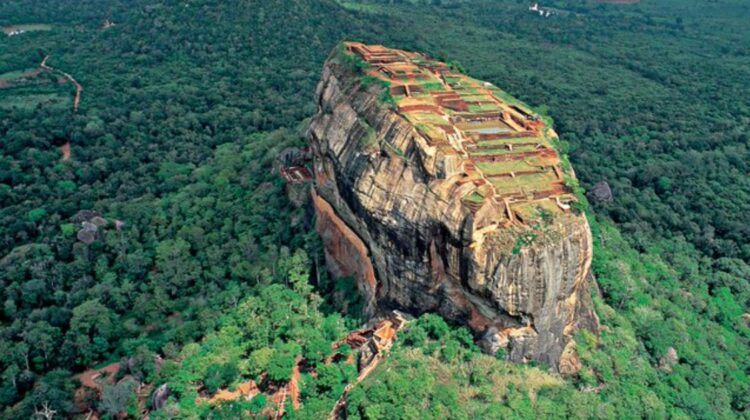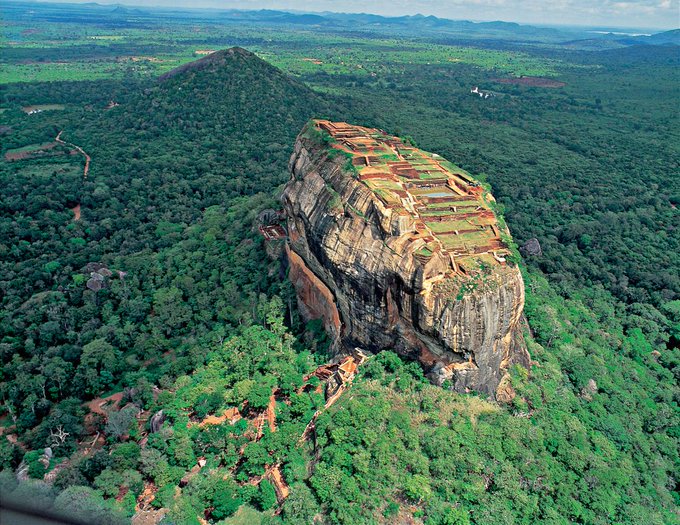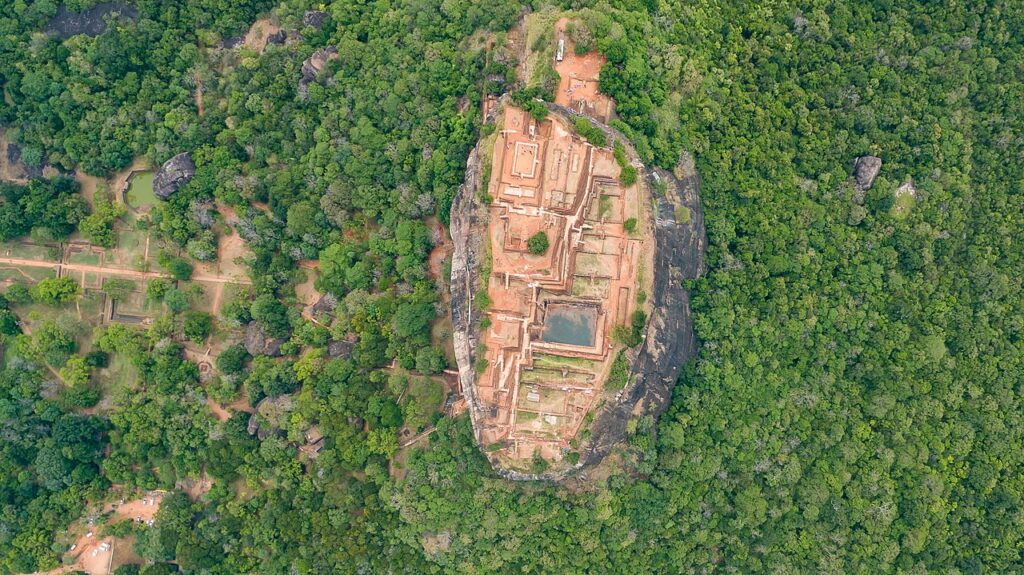
In the heart of Sri Lanka lies a breathtaking marvel of ancient engineering and architectural ingenuity. It is a massive column of rock, nearly 200 meters high, known as Sigiriya. Perched atop this towering monolith is a 1600-year-old fortress, a testament to the rich history and cultural heritage of the island nation.
Sigiriya, also referred to as the Lion Rock, is a UNESCO World Heritage site that has captivated visitors for centuries. Its dramatic presence against the backdrop of lush greenery and the surrounding plains is a sight to behold. This majestic rock formation, rising with sheer grandeur, holds within its walls a treasure trove of historical significance.

Dating back to the 5th century, Sigiriya served as a fortress and palace complex during the reign of King Kashyapa. The king, driven by both ambition and a desire for security, chose this seemingly impregnable rock as the site for his royal abode. With its strategic location and natural defenses, Sigiriya provided a stronghold that safeguarded the king and his court from potential threats.
The architectural wonders of Sigiriya are evident from the moment one sets foot in its vicinity. The ascent to the summit includes a series of steep staircases, flanked by intricately carved rock frescoes known as the Sigiriya maidens. These beautiful depictions of celestial nymphs mesmerize visitors with their grace and charm, offering a glimpse into the artistic prowess of ancient Sri Lankan civilization.

As one reaches the top, a plateau opens up to reveal the remnants of the ancient palace complex. The well-preserved ruins include the foundations of the royal palace, intricate water gardens, and remarkable engineering feats such as the Lion Gate, which once served as the grand entrance to the fortress. The remnants of a lion statue, believed to have adorned the entrance, stand as a silent sentinel, a testament to the grandeur that once graced this magnificent site.
Beyond its architectural marvels, Sigiriya also holds great cultural and historical significance. The rock fortress and its surroundings are adorned with vibrant frescoes depicting a variety of subjects, including celestial beings, animals, and scenes from daily life. These paintings, despite the passage of time, retain their vivid colors and offer a glimpse into the artistic traditions of ancient Sri Lanka.

The top of Sigiriya also offers panoramic views of the surrounding landscapes, allowing visitors to appreciate the natural beauty that embraces this historic site. From the lush greenery of the plains to the distant hills, the vista from the summit is awe-inspiring, providing a serene backdrop to the magnificence of the fortress.
Today, Sigiriya stands as a testament to the rich heritage and architectural prowess of Sri Lanka’s ancient civilizations. It serves as a reminder of the cultural treasures that lie scattered across the island, waiting to be discovered and admired by those who seek a deeper understanding of the past.

Visiting Sigiriya is not just a journey back in time but a chance to marvel at the grandeur of human achievements. It is an opportunity to stand in awe of the architectural brilliance that shaped the landscape and to appreciate the historical and cultural significance that Sigiriya embodies.
As visitors ascend the rock, they are transported to a bygone era, where kings ruled and legends were born. Sigiriya remains a testament to the enduring power of human creativity and the indelible mark we leave on the world around us.
To experience Sigiriya is to immerse oneself in the rich tapestry of Sri Lanka’s history, to walk in the footsteps of ancient kings, and to witness the majestic grandeur of a fortress that has stood tall for over 1600 years.

Leave a Reply